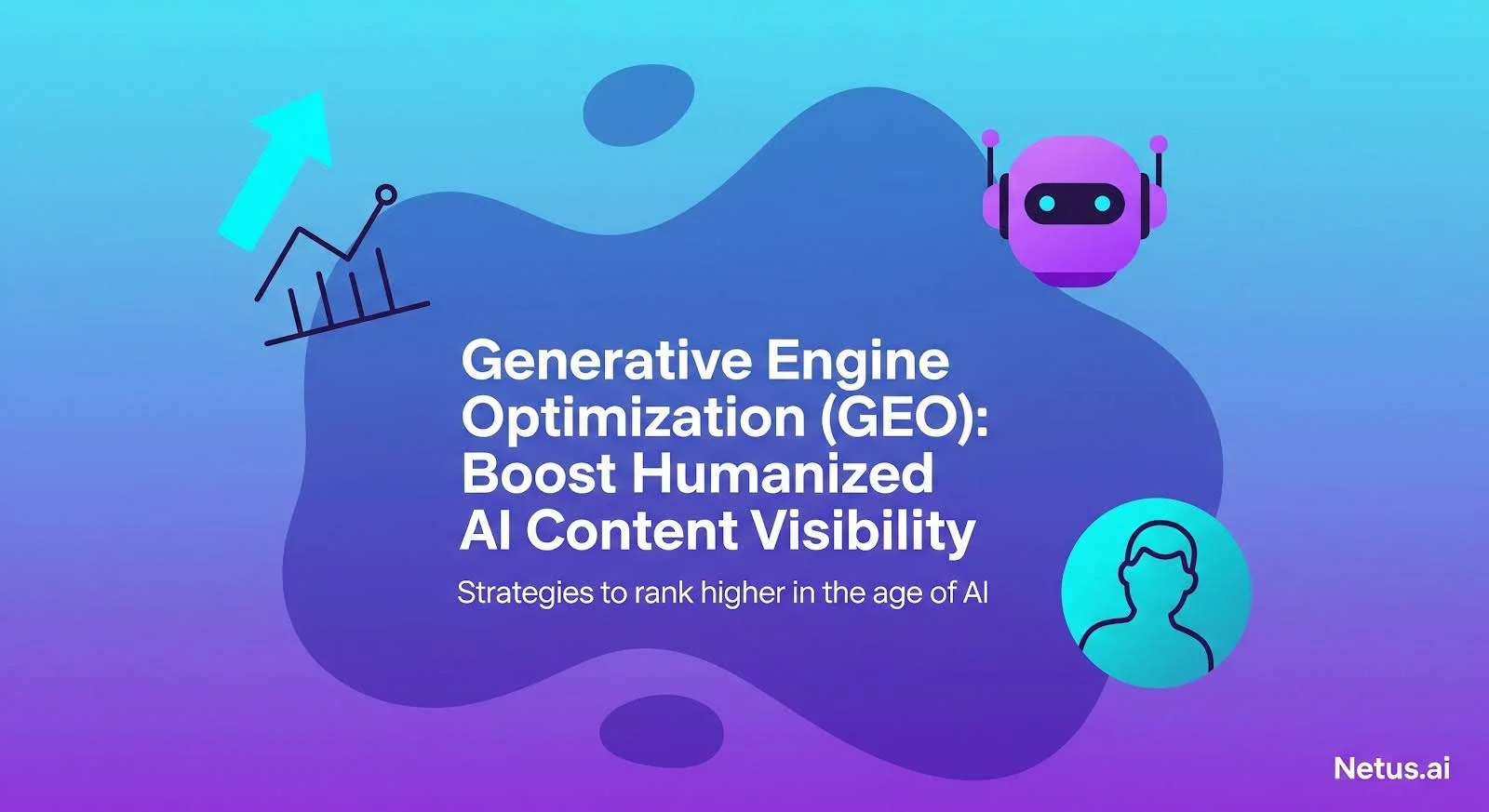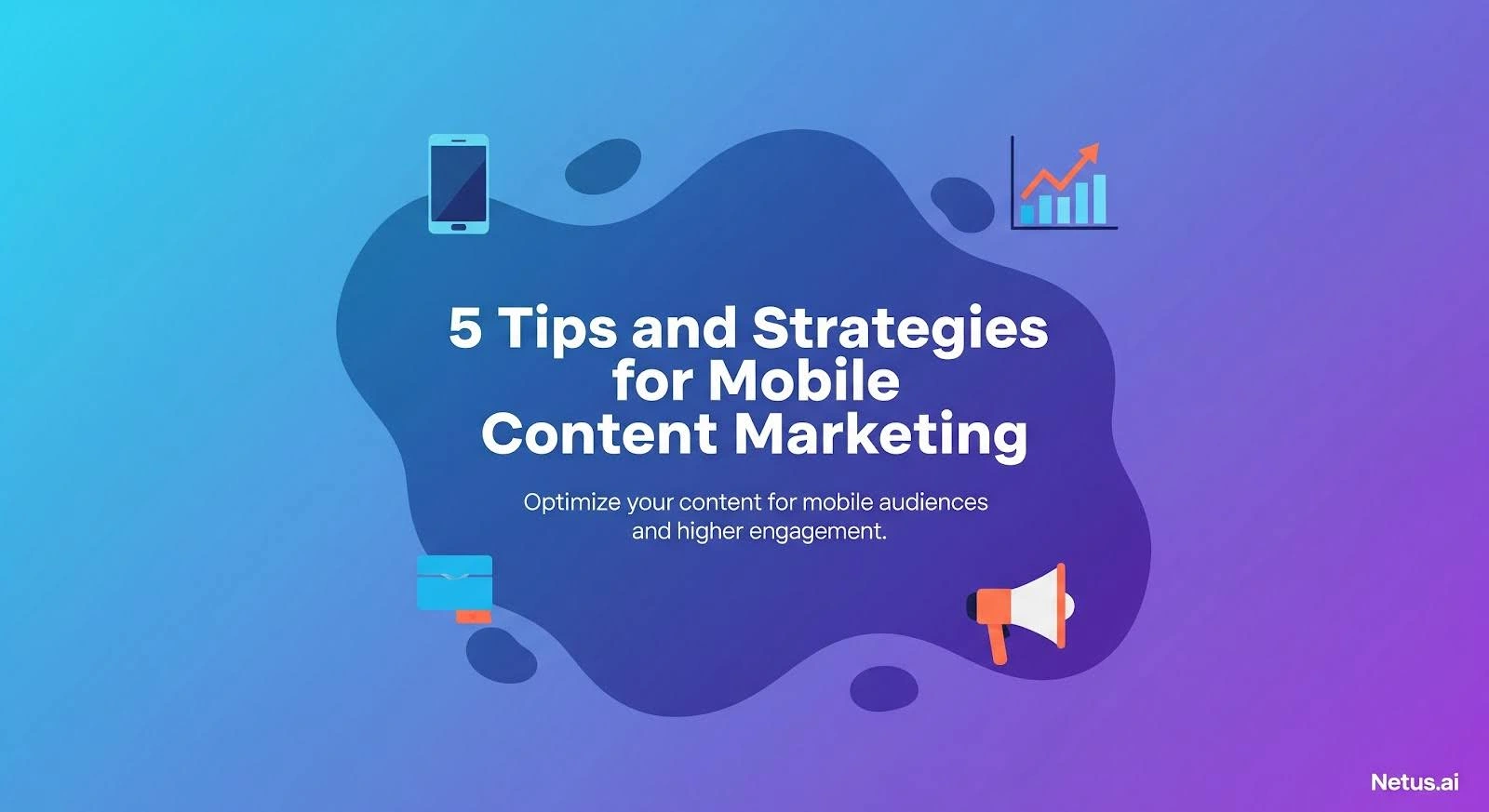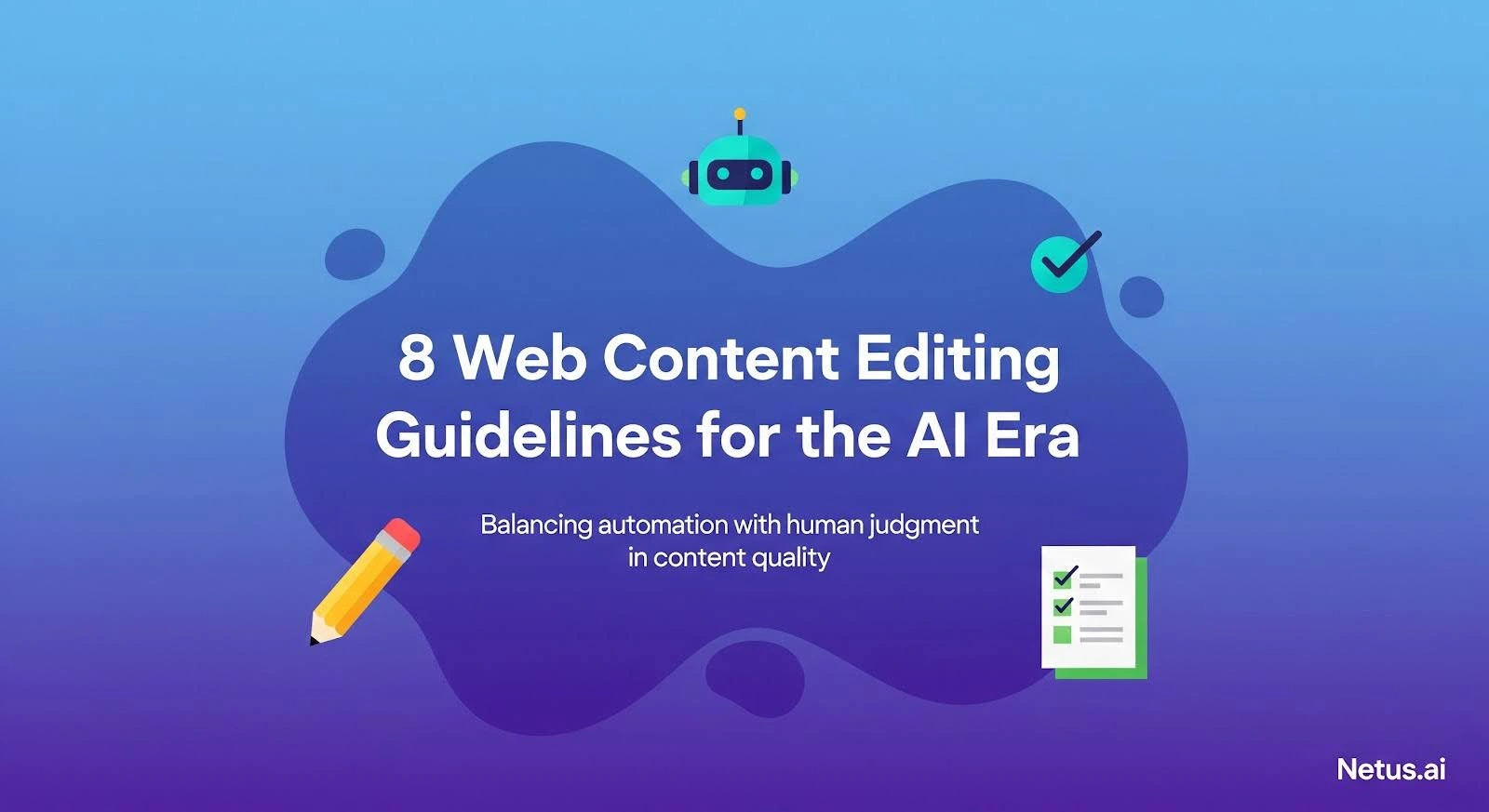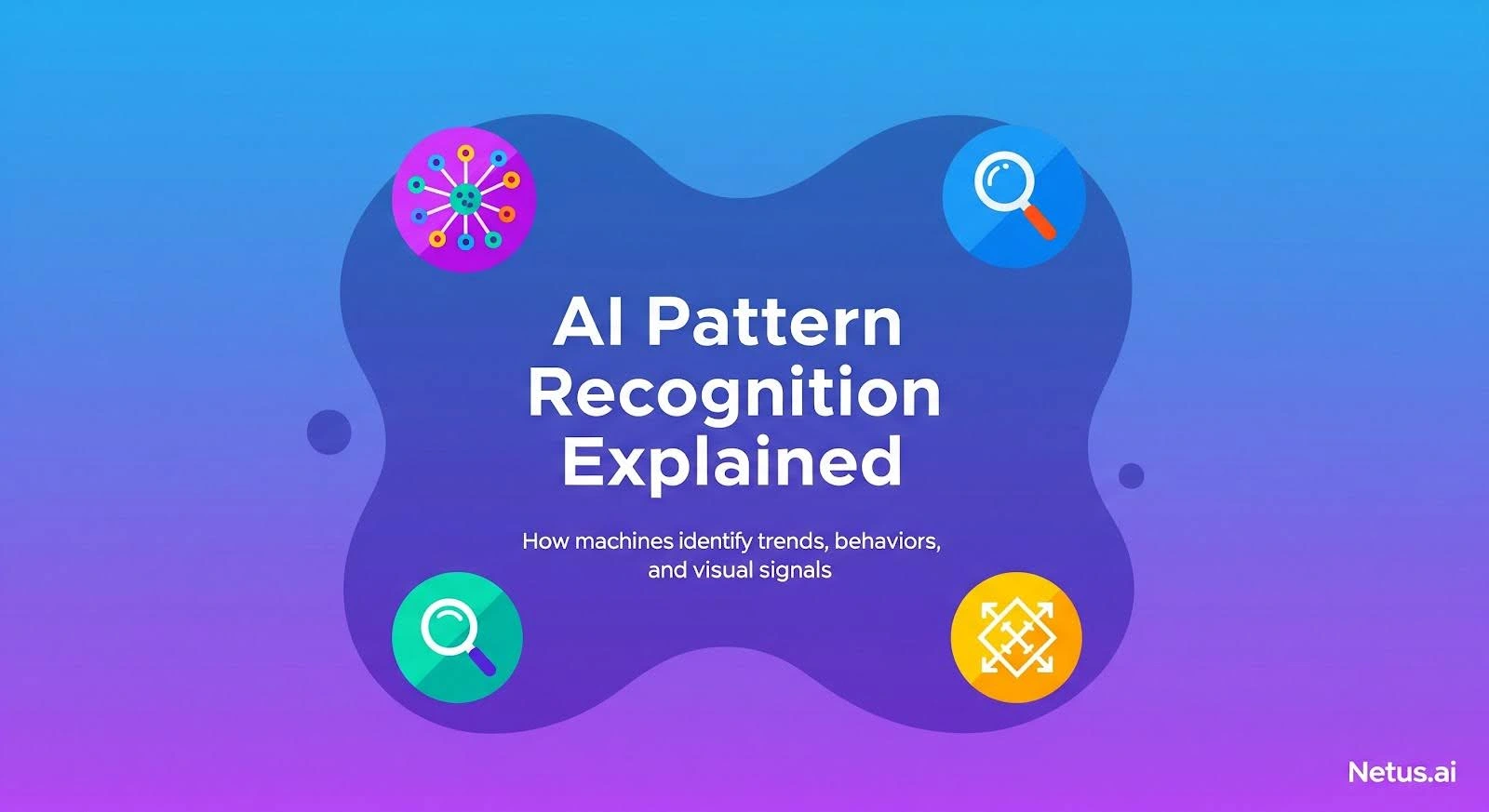Remember typing a query into a search bar and sifting through pages of blue links? That experience feels increasingly quaint. The dominant way users find information now is through Generative Engine responses.
This seismic shift means the old rules of visibility are obsolete. If your content isn’t optimized for AI, it won’t be found by most searchers. This isn’t a future trend; it’s the core reality of discovery today.
What Exactly Is GEO? The Engine Fueling Modern AI Visibility
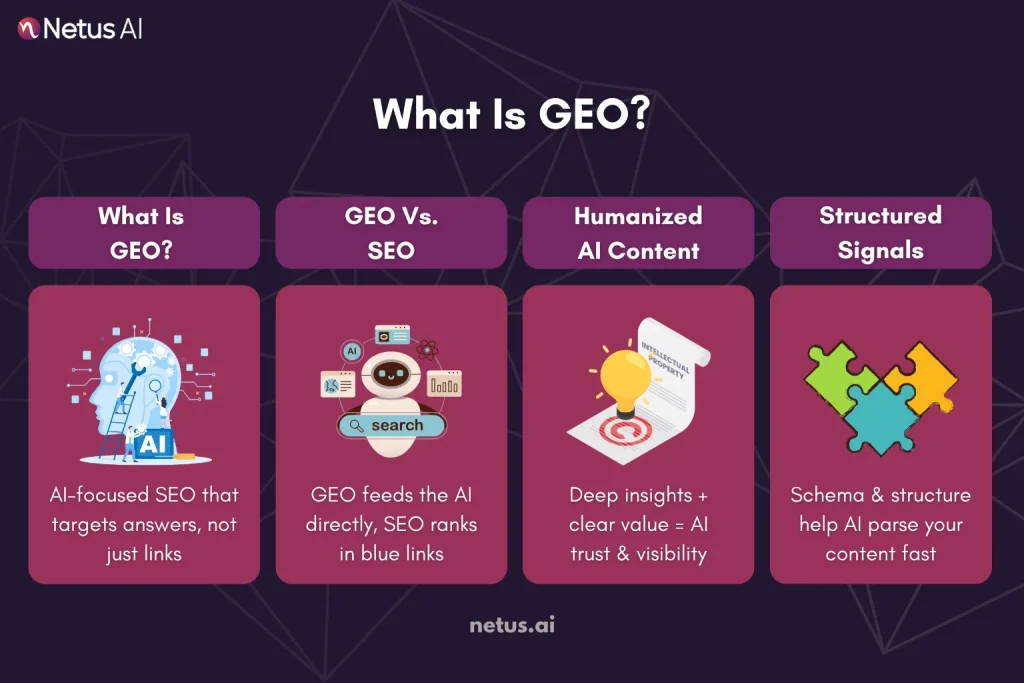
Generative Engine Optimization (GEO) is all about making your content, data, and website super friendly for generative AI systems.
GEO ensures AI models select, understand, and synthesize your expertise for user query responses.
Contrasting GEO with Classic On-Page SEO
- Classic On-Page SEO Goal: Rank your specific page highly for a keyword phrase. Success is measured by position #1-10 in the SERP link list.
- GEO Goal: Become a trusted AI source, appearing above traditional search results. Success is measured by consistent citation within the AI-generated response (SGE, Copilot card, Perplexity answer).
- Classic SEO Focus: Keyword density, internal linking, meta tags, URL structure, readability scores for human visitors.
- GEO Focus: Demonstrating authoritative expertise, providing comprehensive context and structuring information so it’s effortlessly machine-interpretable for AI synthesis.
- Classic SEO Output: A ranked webpage link.
- GEO Output: Your data, insights or brand being directly integrated into the AI’s generated answer.
How AI Detectors & SGE Rankers Overlap? The Shared Power of Authenticity

AI content detectors identify synthetic text, while Google’s SGE prioritizes helpful responses; they appear distinct.
Quick Primer: How Detectors Work (Burstiness & Perplexity)
AI detectors analyze statistical fingerprints in text:
- Burstiness: Measures variation in sentence structure (e.g., mixing long/complex and short/punchy sentences). Human writing is rhythmically irregular; AI text often defaults to uniform patterns.
- Perplexity: Tracks word predictability. Humans use occasional unexpected phrasing; over-optimized AI text leans on highly probable (boring) word chains.
High burstiness + moderate perplexity = “human-like” signals.
Google’s Helpful Content Update (HCU): The GEO Compass
Google’s HCU isn’t just about penalizing low-value content, it actively rewards content demonstrating:
- E-E-A-T: Experience, Expertise, Authoritativeness, Trustworthiness.
- People-first purpose: Solving real user problems with originality.
- Depth: Comprehensive coverage beyond surface-level facts.
SGE amplifies this: Its answers synthesize sources that exemplify these traits.
The Overlap: Why Human Tone Wins Everywhere
System | What It Hunts | How Human Tone Helps |
AI Detectors | Synthetic patterns | Natural burstiness/perplexity evades “robotic” flags. |
SGE Rankers | Thin/derivative content | E-E-A-T depth positions you as a trusted source for AI synthesis. |
GEO Performance | Machine-unfriendly data | Structured + conversational content is easy for AI to parse, cite and validate. |
Practical Implications for Bloggers
1. Write for Humans, Structure for Machines
- Use varied sentence lengths, idioms and rhetorical questions (burstiness).
- Embed schema markup, bullet points and semantic headings (machine clarity).
2. Prioritize Depth Over Density
- A 500-word “answer” won’t cut it. Cover context, counterarguments and real-world applications (signaling E-E-A-T).
3. Audit for Authenticity
- Test drafts with tools like Originality.ai. High “human” scores correlate with HCU-friendly content.
- Ask: “Would I share this with a colleague?” If not, SGE won’t value it either.
AI detectors and SGE rankers converge on one truth: Artificial fluency ≠ authority. The same human-centric principles that evade detection also dominate generative rankings. Stop fearing detectors; start embracing humanity as your GEO superpower.
Humanize First: Crafting Content LLMs Want to Cite
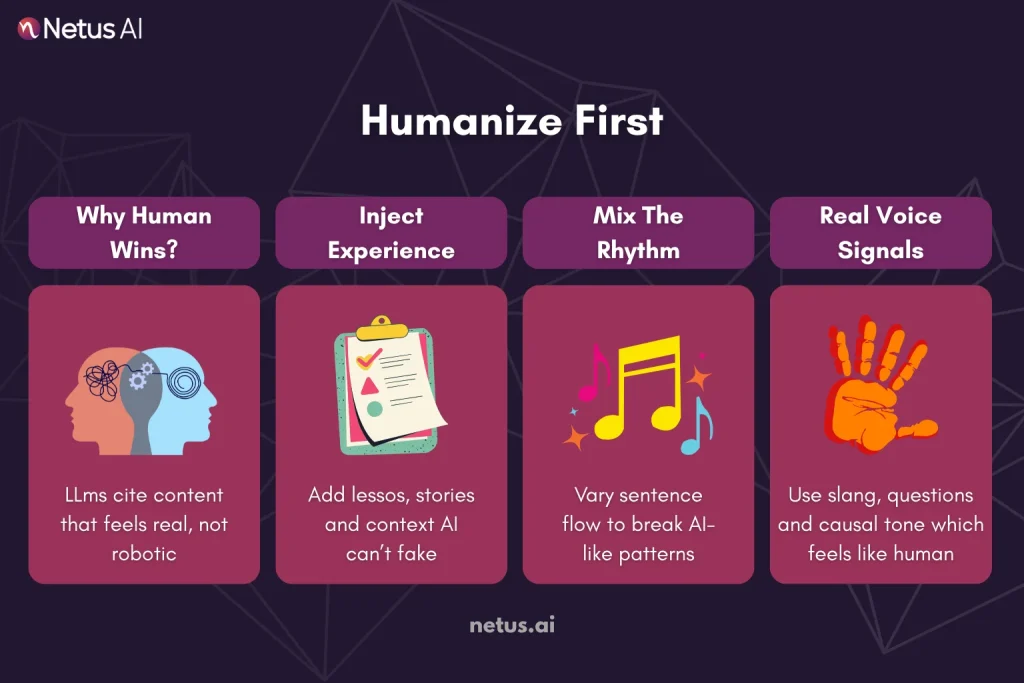
Let’s be blunt: large language models don’t reward lifeless content. For content visibility with AI tools like Perplexity and Google SGE, prioritize human authenticity over keyword density. If your content reads like it came straight from a template, it won’t get cited.
Here’s what actually works in a GEO framework:
Inject Real-World Experience
Models love content that feels lived-in. Don’t just explain what something is, give it texture.
Add a client anecdote, a team lesson or a behind-the-scenes insight that AI simply couldn’t fabricate.
Break Pattern Symmetry
AI detectors and generative rankers both flag overly predictable sentence structures. That’s why burstiness (sentence variety) and tonal shifts help you pass detection and appear more useful to LLMs.
Short, punchy lines? Mix them with longer, layered thoughts. That rhythm = credibility.
Add Semantic “Noise” That Feels Natural
Throw in a rhetorical question. Use casual contractions. Reference a brand moment. These micro-fluctuations act as human markers, subtle signals that tell algorithms your content is authored, not output.
Don’t guess what “feels human.” Use Netus humanizer. It identifies robotic phrasing and suggests real-time, human-like rewrites, integrating seamlessly into your workflow.
The Feedback Loop: Testing, Tuning & Reinforcing GEO Wins
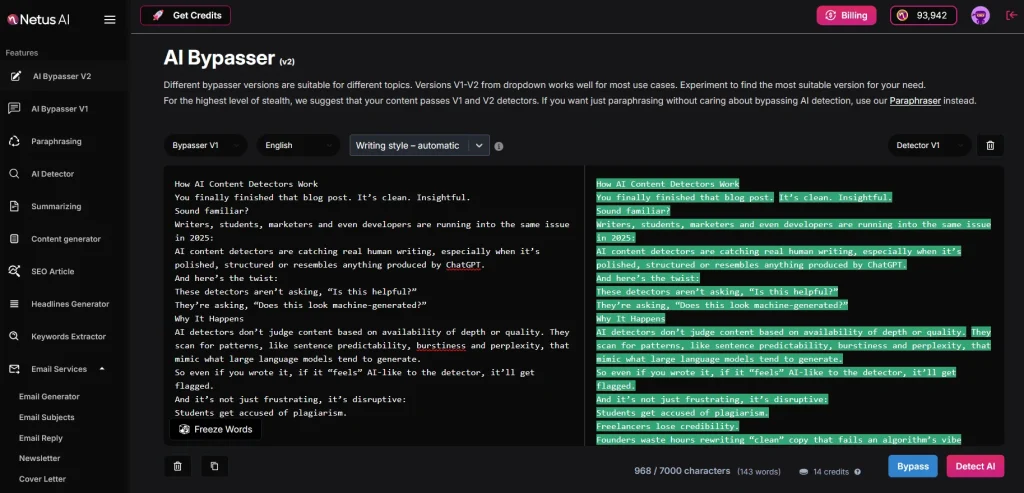
Generative Engine Optimization isn’t a one-shot deal, it’s a cycle. If you want LLMs to keep surfacing your content, you need to treat every blog, landing page or product writeup as a living asset.
Here’s how smart GEO operators close the loop:
1. Run It Through a Detector
Don’t publish blind. Use tools like NetusAI to check whether your content triggers any “Detected” or “Unclear” flags. These aren’t just AI cues, they’re proxy indicators of poor structure, weak tone or robotic flow.
2. Rewrite the Weak Spots
Instead of starting from scratch, fix surgically. NetusAI highlights only what’s risky and lets you humanize. You can rewrite a single block, scan again and repeat until your piece reads clean, original and organic.
3. Watch Distribution Signals
Are your posts getting picked up by Perplexity, SGE or chat-integrated answers? If not, something’s off.
Revisit your formatting, add more “citable” statements (stats, insights, first-hand takes) and test again.
4. Bake Wins Into Future Templates
Once a page gets surfaced by LLMs or starts outperforming in SEO, reverse engineer why. Was it the phrasing? The list format? The original example? Feed those traits into future content so your wins become repeatable, not random.
GEO requires continuous evolution. Netus provides tools for rapid testing, precise adjustments, and confident scaling, without compromising quality or voice.
NetusAI offers content generation and SEO article writing tools that bypass AI detection.
Final Thoughts
Perplexity, SGE, and ChatGPT are the new web entry points. Content visibility now relies on being referenced and surfaced, not just highly ranked.
That’s where Generative Engine Optimization comes in.
GEO isn’t about tricking models. It’s about training them. Humanizing, optimizing, and layering AI-assisted content with original data ensures your brand is found, not just indexed.
And if you’re serious about scaling that process? NetusAI is built for this era. Need top-tier, global SEO content? Netus offers real-time AI checks, instant rewrites, and complete article generation.
The future of visibility isn’t just SEO. It’s GEO. Learn it, apply it and lead the wave, while everyone else is still optimizing for yesterday.
FAQs
The goal is to structure, phrase and enrich your content in a way that large language models can reference, cite and surface reliably.
It emphasizes detection-safe content, structured formatting and semantic richness that LLMs can easily interpret and trust.
Absolutely, but it must be humanized first. Tools like NetusAI help you rewrite and refine AI-generated content into something more natural, reliable and LLM-ready.
To ensure visibility for generative engines, avoid templated, shallow, or AI-flagged content. Inconsistent formatting, low E-E-A-T, and missing context also hinder visibility.
Use clear H2/H3 structure, natural question/answer sections, concise definitions, bullet points and fact-based statements. Avoid generic filler. Structured, scan-friendly formatting helps both AI and humans understand and trust your content.
Yes. A tool like NetusAI allows you to test, rewrite and retest in real time, ensuring your content appears “Human” to both readers and engines.
Long-form guides, product comparison pages, FAQs, how-tos and original research pieces are ideal. These formats allow for the depth, context and formatting that generative engines prefer when surfacing answers.
GEO isn’t a replacement for SEO, it’s the next layer. GEO ensures your content is ready for both.

